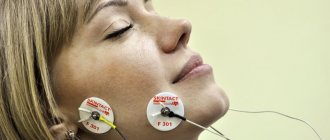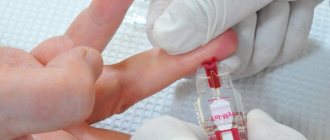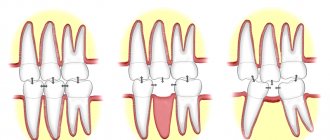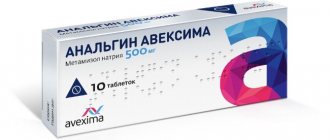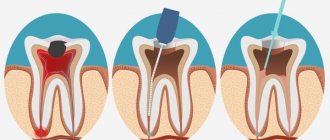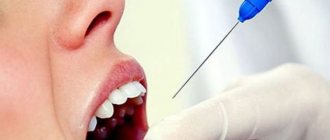Stylohyoid syndrome also has another name - Eagle's syndrome. This pathology is in the area of the styloid process, located in the area of the temporal cranial bone. It can also be located in the area of the stylohyoid ligaments, affecting their parameters, changing their appearance and dimensions.
When considering the size of the correct position of the styloid process, you need to remember - it should be 3 cm, no more. Although each person's body is unique. Variants were recorded when patients of different sexes were considered, aged from 30 to 50 years, and the size of the process was only 40 mm. But this did not bother the patients in any way, and even less unpleasant symptoms were observed.
Possible causes of the disease
Various indicators can lead to the occurrence of stylohyoid syndrome (Needle):
- Curvature or elongation of the styloid process.
- Hardening, leading to ossification of the ligament responsible for the performance of the jaw.
- The ligament and the styloid process grow together, which leads to disruption of their functionality.
- Fusion of the bone located under the tongue with the styloid ligament.
- Cramps of the stylohyoid muscles (may occur due to prolonged yawning, but prolonged opening of the mouth can lead to spasms or convulsions).
Eagle syndrome. Symptoms and manifestations
Symptoms usually appear after injury to the pharynx or tonsils. Persons with this syndrome often complain of a nagging, dull, prolonged pain in the throat, sometimes radiating to the ear. Sometimes patients complain of odynophagia, dysphonia, increased salivation and headache.
In 1937, Eagle described two possible clinical expressions:
- “Classic Eagle syndrome” usually occurs in people who have suffered trauma to the pharynx or tonsils. The classic form of Eagle syndrome is characterized by ipsilateral dull and persistent sore throat, which may be aggravated by rotation of the head. Other signs and symptoms include dysphagia, foreign body sensation in the throat, ringing in the ears, or neck pain.
- The “second form” of Eagle syndrome is caused by compression of the internal or external carotid artery by the deviated styloid process. This form is associated with pain that spreads along the direction of the artery. The pain is provoked and aggravated by rotation of the head. The “second form” has nothing to do with the tonsils. In cases of irritation of the internal carotid artery, patients often complain of supraorbital and parietal headaches. In case of irritation of the external carotid artery, the pain is localized in the infraorbital region.
Signs of the disease
It is possible to identify the manifestation of the disease by the following symptoms of stylohyoid syndrome:
- spasms are observed during swallowing actions;
- there is a dull pain in the cervical region that radiates to the ears (can be on one or both sides);
- frequent pain appears at the time of swallowing;
- there is a feeling of a foreign object in the oral cavity, which occurs due to the process of the styloid ligament;
- unpleasant painful effects appear in the sublingual area, as well as behind it;
- when palpating the area under the tongue, an increase in the number of tubercles on the bone located under the tongue or an increase in the volume of the small horn will become noticeable;
- if there is pain in the neck, it may move to the temples, lower jaw, and cheeks (unpleasant sensations will only intensify when rotating the head, during long conversations, or while eating solid food);
- possible pain in the head;
- frequent dizziness;
- manifestation of nausea syndromes.
When studying the disease from clinical observations, it is worth paying attention to the fact that the disease most often manifests itself on the right side. This is due to the fact that the process located on the right is 3-4 mm longer in size, in contrast to the left one.
There is also a type of Eagle syndrome called carotid-styloid syndrome. This manifestation of the disease is also called carotid artery syndrome because the styloid process is enlarged and slightly curved. Thus, the edges touching the carotid artery are affected, which leads to additional irritation of the plexus of the sympathetic trunk.
Symptoms of this variant of the disease include:
- the presence of painful pulsation in the frontal part of the head;
- pain in the bridge of the nose, constant pain in the eye sockets;
- the cheeks, parietal part, and temporal lobes begin to show pain.
Symptoms
Stylohyoid syndrome is characterized by the following symptoms:
- spasms in the throat when swallowing;
- pain in the neck (on one or both sides) of a dull nature, radiating to the ears;
- sore throat when swallowing;
- sensation of the presence of a foreign body in the pharynx, resulting from pressure from the styloid process;
- pain behind or under the tongue;
- when palpating the sublingual area, you can feel an increase in the number of horns on the hyoid bone, and a compaction of its small horn;
- pain from the neck area radiates to the temples, cheeks and lower jaw and intensifies after long conversations, intense head twisting and eating large amounts of solid food;
- headache;
- dizziness;
- nausea.
Eagle syndrome in most clinical cases is right-sided, since the styloid process, located on the right, is 3-4 mm longer than the left one.
There is another type of stylohyoid syndrome, called styloid-carotid syndrome, or carotid artery syndrome, in which the styloid process is significantly elongated and curved to the side, its tip mechanically affects the walls of the carotid artery, irritating the tissues of the sympathetic plexus.
Sore throat and spasms when swallowing are the most common symptom of stylohyoid syndrome.
Symptoms of carotid artery syndrome include:
- pain in the forehead;
- pain in the eye sockets, bridge of the nose;
- the pain syndrome radiates to the cheeks, temples and parietal region of the skull.
Performing syndrome diagnosis
To properly check for the presence of a disease, it is necessary to perform a full range of various procedures. In particular, diagnosis of stylohyoid syndrome includes a number of actions and manipulations.
First of all, a professional examination of the patient is performed, as a result of which the doctor examines and identifies the compaction of the bone growth in the area of the anterior zone of the cervical spine of the patient. If you press on this part, the person should experience pain, and his health will deteriorate greatly.
Secondly, an X-ray of the facial skeleton, skull bones, and neck is taken.
At the time of diagnosis, you should carefully approach the procedures, because this disease can easily be confused with other similar pathologies, the symptoms of which are very similar. As an example, suppuration of the tonsils can be cited.
How to diagnose Eagle-Sterling syndrome?
ENT doctor
I have been sick for 2 years. It started with a sore, burning sensation in the throat on the right, especially when swallowing. I was treated by many ENT specialists, in principle, they found nothing except chronic pharyngitis. And there was no improvement. The neck on the right began to hurt when turning the head, when throwing back, pressing sensation in the right ear. Often a pressing, painful sensation in the neck, just below the earlobe, on the right. And now it happens every day. Sometimes there are headaches, mainly on the right, a constant state of weakness. Was observed by a neurologist, gastroenterologist, maxillofacial surgeon facial surgeon... I did an MRI of the neck, head, CT scan of the temporal joint. There is cervical chondrosis, polypous sinusitis. Once a neurologist suggested stylohyoid syndrome, I turned to an oral surgeon, he, in principle, says that the symptoms of this syndrome are different, there is nothing in the throat I felt it and again sent it to the ENT specialist... The fact is that on the right I myself see a small bone process, as if it were coming from the tonsil, but the surgeon finds nothing, doesn’t see anything, says it’s the tonsil, and nothing can be felt... and there are so many ENT specialists I looked before, it turns out that no one sees anything either. Doctor, please answer, can this syndrome exist in my case, with my symptoms (I understand, hardly anyone makes diagnoses in absentia, but still), and how can I exclude it, or confirm. My examinations that I did did not provide any information, and to be honest, I concluded that many doctors simply do not know what kind of syndrome this is, they roll their eyes and shrug their shoulders. They didn’t even write to me about a CT scan of the temporal joint nothing about the styloid processes, what size they are, how they are located, is there any desalination, etc., although as I understand it, they just belong to the temporal bone, these processes. And not a word about them, maybe the radiologist doesn’t know either, that they can be disturbing, and that they need to be looked at. In our city, I can also do a cone-beam tomography of the jaw joint; I simply won’t find a better examination in the city. Doctor, write, will it be informative in my case? I’m in despair, weakened physically and mentally, I don’t see the point in living. I’ve been going to doctors for two years, and there’s just no point... And I’m also worried about this question: can I go to your clinic, for example, for a consultation, and how much will it cost? Is it possible? do this on a day off. and how can I contact you (make an appointment). Thank you in advance.
Slavsky Alexander Nikolaevich
Good afternoon. The long styloid process, in other words Eagle-Sterling syndrome, manifests itself, as a rule, in the sensation of a foreign body in the pharynx, pain in the maxillary joint, shooting pain when turning the head. Diagnosis of this syndrome is quite simple - you need to perform a CT scan of the temporal bones with visualization of the styloid process to measure it. This will allow you to find out whether you have this pathology.
You can find all the necessary information about the services offered and their costs on our website: https://www.emcmos.ru/ru or by calling. Come, I will be glad to help you.
Recommended therapy for Eagle syndrome
Various treatment options are used to treat stylohyoid syndrome. There are both radical and conservative treatment.
Considering the last method, it is worth highlighting drug treatment. For example, a doctor may prescribe medications with an analgesic effect. Usually the drugs are taken during a certain course, which includes taking Pentalgin or Analgin tablets three times.
Injections are given with drugs containing corticosteroid painkillers. They are done in areas of pain points. The most commonly used agents: Novocaine in combination with Methylprednisolone, a mixture of Lidocaine with a suspension of Triamcinolone.
Be sure to take various sedative medications. You can choose motherwort tincture, Novo-Passita tablets or drops, or valerian extract.
Surgical intervention
If treatment of stylohyoid syndrome with a conservative method does not bring the desired result, then it is time to undergo surgery. It is important that the operation is performed by a highly qualified surgeon.
In this case, there is a partial shortening of the stylohyoid process, curved or elongated during the period of the disease. Surgical removal of the crown related to the hyoid bone is also performed.
The method of radical treatment is divided into two methods:
- External oral. In this case, the surgeon makes an incision on the outside of the neck so that it is possible to gain access to the grown growth. This method is the most popular and is used more often than others.
- Intraoral. This method is carried out much less frequently, since closely located clusters of blood vessels, as well as nerve endings, interfere (malfunctions or ruptures are possible). It is used when the styloid process has reached a large size. In this case, external oral surgery is not possible.
Treatment of Eagle syndrome with surgical intervention is a successful, effective and high-quality intervention. After the operation, patients experience no discomfort, which was caused by the elongated process of the styloid bone.
Diagnosis of stylohyoid syndrome in Pirogov
At the National Medical and Surgical Center named after N. I. Pirogov, the diagnosis is made by studying the anamnesis in conjunction with studies carried out in the clinic.
The disease is most often detected by the following method: palpation of the cervical spine or the fossa of the tonsillar part of the oral cavity occurs, resulting in pain.
Then the patient receives a referral for fluoroscopy, which confirms the diagnosis. There have been cases when an increase in the size of the stylohyoid process did not have a painful effect on patients. Before the pathology was discovered, they felt quite comfortable.
